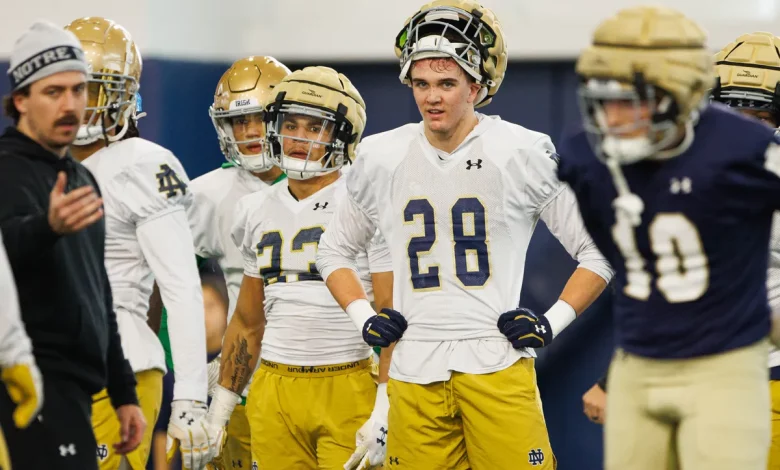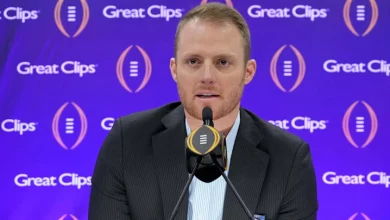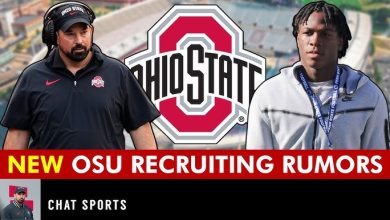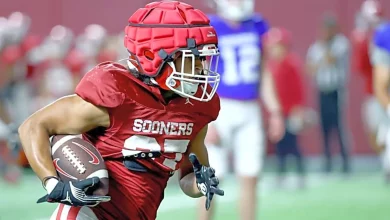Notre Dame football braces for the impact of potential roster cuts, especially concerning the human cost for walk-ons striving for opportunities.

The world of college football is often defined by competition, both on and off the field. For many student-athletes, the ultimate goal is to secure a spot on the team’s roster and, with hard work, rise to prominence. But for those who walk on, the journey is filled with additional obstacles and uncertainty, especially when it comes to roster cuts. As Notre Dame football gears up for the challenges of the upcoming season, one of the key issues the program faces is the impact of potential roster cuts, particularly concerning the human cost for walk-ons.
Walk-ons are players who, unlike scholarship athletes, are not initially offered a full scholarship to play. Instead, they often join the team through sheer determination and a desire to prove their worth. While some walk-ons go on to become key contributors on the field, the reality is that many will ultimately face the harsh reality of roster cuts, a process that brings not just athletic and professional consequences but significant emotional and personal tolls as well.
This article delves into the unique challenges walk-ons face at Notre Dame, the potential impact of roster cuts on their lives, and how the program can better support these athletes during a difficult process.
The Walk-On Experience at Notre Dame
Notre Dame, one of the most prestigious programs in college football, is no stranger to producing top-tier talent. With a rich football history, national championships, and legendary coaches, Notre Dame remains one of the most highly regarded football programs in the nation. As one of the top programs in college football, competition for a spot on the roster is fierce. The Irish recruit elite talent, and only the best players make it onto the team.
However, not every player who dreams of playing for Notre Dame is granted a scholarship. This is where walk-ons come in. Walk-ons are players who, without the benefit of a scholarship, choose to earn a place on the team through tryouts, hard work, and perseverance. These athletes often arrive on campus with the same dreams as their scholarship counterparts, but without the financial backing or guaranteed playing time.
The walk-on process at Notre Dame is incredibly competitive, with thousands of hopefuls attempting to make the roster each year. For many, the experience can be humbling. They often spend years on the team without receiving significant playing time, working hard to contribute in practice and on special teams while remaining dedicated to the sport they love.
Walk-ons at Notre Dame come from various backgrounds. Some are former high school stars who were overlooked by major college programs. Others are athletes who chose to walk on because they believe in the university’s academic prestige and the opportunity to be a part of its football legacy. No matter their reasons for joining, every walk-on shares a common trait: a relentless drive to earn a spot and prove their worth.
The Mental and Emotional Toll of Walk-On Life
Being a walk-on at Notre Dame is no easy feat. For many of these athletes, their journey begins with a sense of optimism and the hope that their hard work will pay off. They spend countless hours on the field, in the gym, and in film rooms, trying to impress coaches, gain playing time, and ultimately earn a scholarship. But as time passes and opportunities on the field remain limited, the emotional weight begins to grow.
For many walk-ons, the mental and emotional strain is an ever-present challenge. The desire to prove themselves can lead to burnout, frustration, and self-doubt, especially when compared to scholarship athletes who have more prominent roles on the team. Walk-ons often struggle to balance the demands of being a student-athlete with the pressure to contribute to the team despite limited playing time or visibility. This can lead to feelings of isolation, as they may feel like they are working just as hard, if not harder, than their scholarship counterparts, but receiving little recognition or reward.
While some walk-ons are able to make an impact on the field, many are relegated to practice squad duties, rarely seeing significant playing time in games. The struggle to stay motivated, to remain positive in the face of minimal opportunities, and to continue working toward the elusive dream of becoming a starting player can be emotionally taxing. The pressure to perform, to constantly prove oneself, and to maintain the belief that it will eventually pay off can take a toll on mental health, leading to increased levels of anxiety, depression, and burnout.
One of the most difficult aspects of being a walk-on is the uncertainty surrounding roster cuts. As a walk-on, there is always the fear of being cut from the team, which can happen unexpectedly. The stress of knowing that your spot on the roster is not guaranteed creates a constant sense of instability. For many athletes, this uncertainty can affect their sense of identity and self-worth. When their dream of playing for Notre Dame is at risk, it becomes a source of emotional pain.
Roster Cuts: The Reality of College Football
At the collegiate level, especially at a high-profile program like Notre Dame, roster cuts are an unfortunate but inevitable part of the game. Every year, teams are forced to make tough decisions about which players will remain on the roster and which will be let go. For walk-ons, this process is particularly devastating because their places on the team are never guaranteed.
As the roster size shrinks in preparation for the season, the pressure on coaches to make decisions becomes more intense. These cuts are typically made based on performance in practice, individual workouts, and the needs of the team. Unfortunately, this often means that some walk-ons will be left behind, despite their tireless efforts and dedication. The emotional toll on these players can be profound, as the dream of playing for one of the most prestigious football programs in the country slips further away.
Being cut from the team means more than just losing a spot on the roster. For walk-ons, being cut is often a deeply personal blow. It is a rejection of all the hard work they have put in, the countless hours of practice, and the sacrifices they’ve made to balance academics and athletics. Many walk-ons come from backgrounds where their opportunities to play at a school like Notre Dame are limited, and being cut can feel like the end of their athletic careers. The human cost of roster cuts is significant, as it can lead to feelings of failure, disappointment, and heartbreak.
However, it’s important to recognize that the impact of roster cuts extends beyond the individual. For coaches and teammates, cutting a player can be difficult. Coaches are aware of the emotional toll this process takes on players, particularly walk-ons, who may have invested years of their lives into the program. While decisions are made based on the needs of the team, they still have to consider the impact on their athletes’ lives and futures.
The Human Cost: Beyond Football
The human cost of potential roster cuts for walk-ons is not just confined to the football field. Being cut from the team can have lasting effects on a walk-on’s self-esteem, mental health, and even their future prospects. For many of these athletes, football has been a central part of their identity for years. It’s not just a sport to them—it’s a passion, a source of personal validation, and a community where they feel like they belong. When that is taken away, it can be difficult to find meaning in other aspects of life.
For some, the transition from being a part of the football team to no longer being involved with the program can lead to feelings of isolation and confusion. They may struggle to find a new sense of purpose, especially if they have sacrificed other opportunities—such as internships or part-time jobs—to focus on their athletic careers. This can create a void, as they navigate a challenging period of self-discovery.
Additionally, there’s the reality that for many walk-ons, being a part of a program like Notre Dame provides invaluable opportunities off the field, including networking, career development, and access to top-tier academic resources. Without football, many walk-ons may face the difficult reality of finding new ways to establish themselves outside of athletics.
Support Systems and Moving Forward
In response to the emotional and psychological challenges faced by walk-ons, it’s crucial for Notre Dame and other programs to provide adequate support systems. Coaches, athletic staff, and mental health professionals must work together to create an environment where athletes feel supported throughout their careers. This means not only focusing on their development as players but also addressing their mental well-being and preparing them for life after football.
Notre Dame, with its rich tradition of academic excellence, is uniquely positioned to offer resources to help walk-ons navigate the emotional challenges of being a part of a high-profile program. The university’s counseling services, career development programs, and academic advising can play a key role in helping walk-ons transition successfully, whether they continue their athletic careers or move on to other pursuits.
Moreover, coaches need to be aware of the mental and emotional toll that roster cuts can take on walk-ons and should do everything they can to maintain open lines of communication with these athletes. Helping players understand the rationale behind roster decisions and offering guidance on what comes next can make the process less traumatic.
Conclusion: Navigating the Uncertainty
The road to success in college football is paved with uncertainty, especially for walk-ons at a prestigious program like Notre Dame. While the dream of playing at such a high level is a driving force for many athletes, the human cost of potential roster cuts cannot be overlooked. These athletes dedicate themselves to the sport, often at the expense of other opportunities, and when cuts come, it can feel like a personal rejection of all their hard work.
As Notre Dame football braces for the impact of potential roster cuts, it is vital to remember the individuals behind the jerseys. Walk-ons are not just athletes; they are students, friends, and future professionals. Their journey, though challenging, is part of what makes college football so special. By recognizing the human side of the game, coaches, staff, and the university can help mitigate the emotional toll of cuts and support these athletes as they navigate the complex world of college football.









